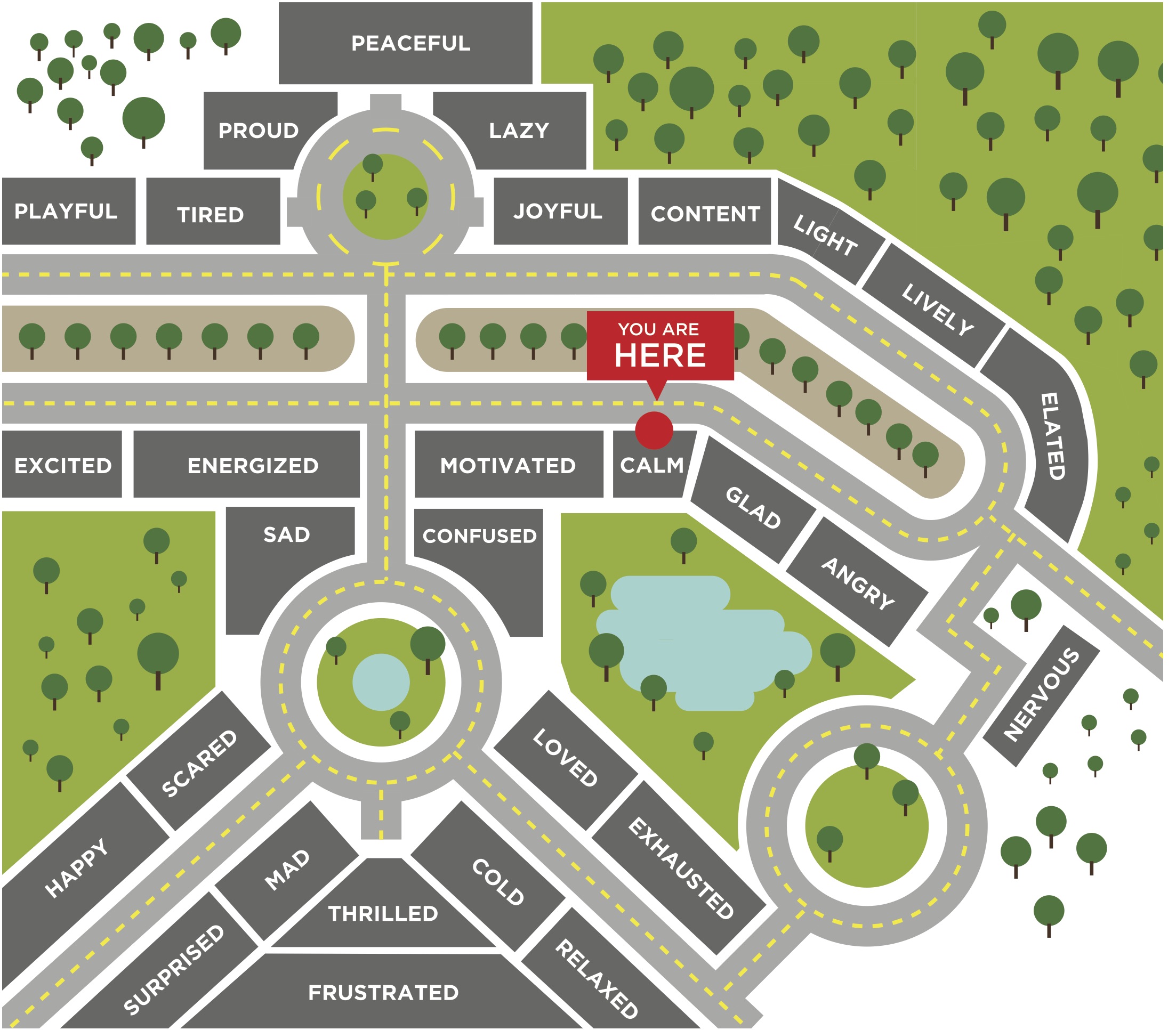September 23, 2016

Using the Red Dot Method
Much like the traveler in the mall, sometimes we need a bright, visual reminder of just where in the world we are. That’s why we practice using the Red Dot method with our clients — a way for them to know where they are and to help them practice becoming more present.
Why is it important to be present? When we aren’t being real with ourselves or others in the room, it’s hard to think clearly, to plan, or to see a vision, when all you can concentrate on is external forces taking place outside. Using the Red Dot method can help bring clarity to the meeting as well as an understanding of where everyone is.
How we use it — and why it works
The Red Dot method works almost like a Native American Talking Stick. Only one person speaks while holding the physical object, which can be a ball, a pillow, an actual stick or any other object you feel like using.
Before starting a meeting — or even during and after the meeting, if necessary — pass the object around and ask everyone to give a one- to two-sentence personal reflection of what they are currently thinking or experiencing.
It can be negative; it can be positive. It can be a mixture. It can be, “I’m really amped up for this meeting and I can’t wait to see what we come up with to solve this problem!” Or “I’m really anxious about this meeting, because I think we’ve had some good ideas in the past that we’ve had a problem executing on.” Or “I’m not even thinking about this meeting at all because my husband told me he wants to sell our house and I’m not emotionally ready.” Anything goes. It’s all about giving others the information to meet you where you are — to be present.
The rules:
- Use a physical object — preferably one that has personal or institutional meaning — that symbolizes that when one person has it, they have the floor.
- Speak from the heart. Listen from the heart. No person’s Red Dot is wrong.
- Be brief and stick to the point.
- Don’t interrupt, comment on, or distract the person who has the floor.



